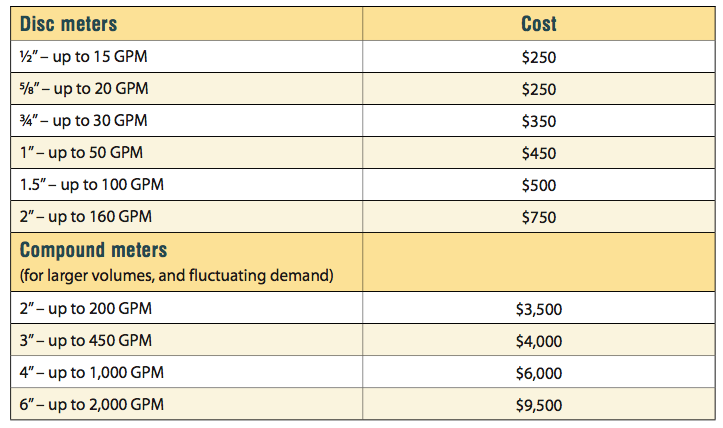New to LEED v4 is this prerequisite requiring the installation of whole building water meters. It also requires sharing a building’s water usage data with USGBC for five years following certification.
You can’t control what you don’t measure, so this requirement gives owners the tools to recognize when there might be operational problems. After a suitable baseline period, owners will be able to recognize when water use changes dramatically, and can act to fix the problem quickly rather than be surprised by a water bill or damage from leaks.
The credit awards one point to projects that install additional water meters on two or more of the following subsystems: irrigation, indoor plumbing fixtures, domestic hot water, HVAC boilers (>100 kgal/year or >500,000 BtuH), reclaimed water, or process water (humidifiers, dishwashers, clothes washers, pools, manufacturing, etc.).
Installing a water meter on irrigation systems makes economic sense in communities that charge for sewerage based on total water usage because it might enable the owner to get utility sewerage credits.
Metering indoor plumbing fixtures and/or domestic hot water usage can make sense for those projects which bill their tenants for water usage. However, it is important to note that some areas require that if tenants are going to be billed for water usage, then all water usage needs to be directly metered to specific uses and reconciled monthly. In this instance, building owners cannot simply bill the metered use to the tenants and consider the remainder “house” water.
Metering an HVAC boiler can make sense if there is a significant amount of heating piping that is out-of-sight or not easily accessible because any water use would indicate a leak. Under normal operation, heating systems should not need added water. If the HVAC system is a steam boiler, metering the make-up can indicate if air vents are leaking steam and not closing when the pipe or radiator gets hot, as they should. Metering can also aid in calculating when water treatment is needed, like when sediment in the system should be removed.
Reclaimed water also makes sense to meter, especially in communities that charge for sewerage based on municipal water use; these may require it because otherwise they will not know how much to charge.
Metering process water also helps with leak detection. If water is used as part of a manufacturing process its cost should be factored into the cost of the final product.
See WEp2: Indoor Water Use Reduction for information on cooling towers and evaporative cooling HVAC equipment.
Cost Synergies
SSc4: Rainwater Management
WEp1/WEc1: Outdoor Water Use Reduction
WEp2/WEc2: Indoor Water Use Reduction
WEc3: Cooling Tower Water Use
EAp2/EAc2: Energy Efficiency

